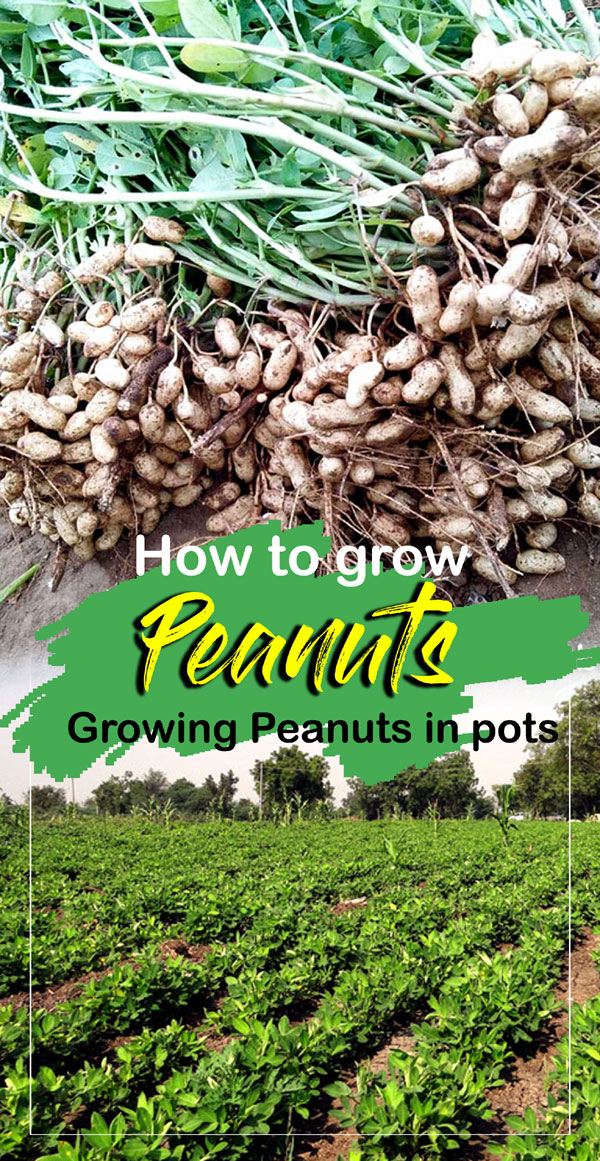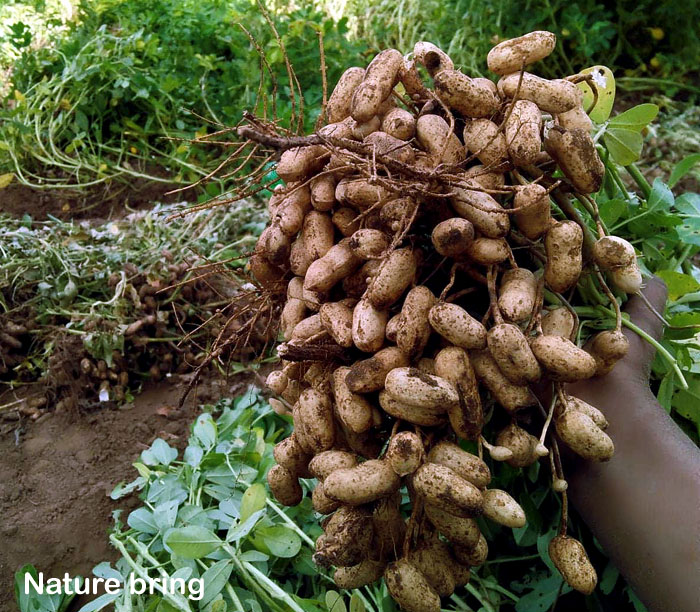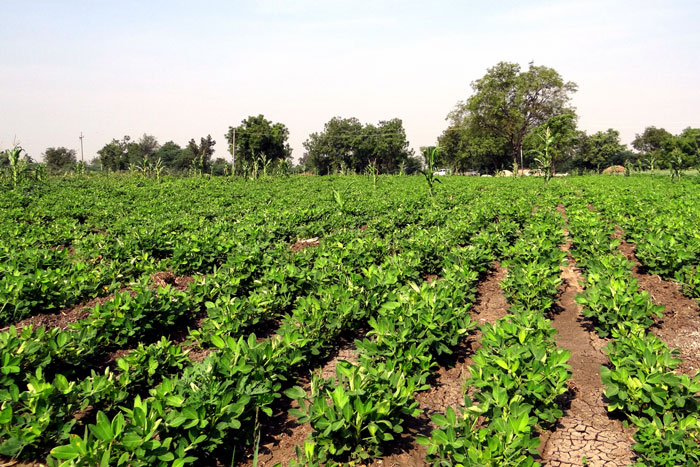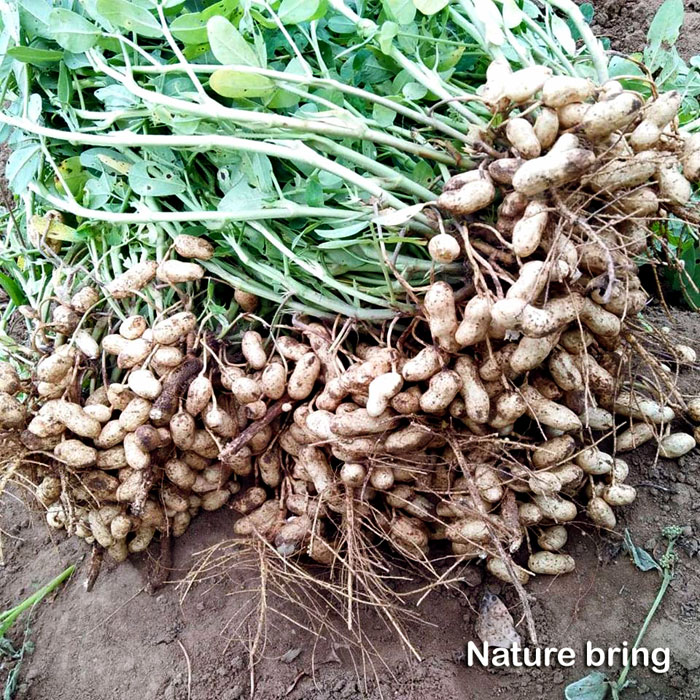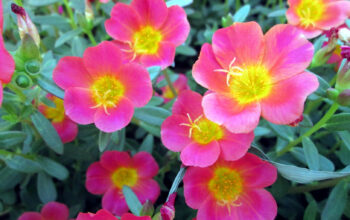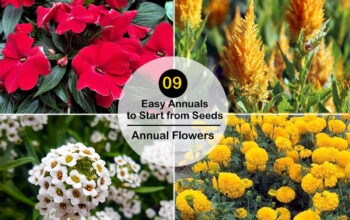Growing Peanuts
You have a report on how to grow peanuts in your garden. Growing peanuts in pots, peanut varieties, Groundnut care, planting monkey nut, and harvesting mungfali advice by our experts. For good growth of groundnut crop, about 500 to 600 mm of rainfall is required. It can be well distributed throughout the season. Although this crop may also occur under low rainfall, its production will be affected.
Groundnut is a tender perennial, annual crop. The height of a peanut plant is about 6 to 30 inches, depending on its different species. Plants have opposite side leaves and pale yellow flowers on each stem. Pea-like stems grow on the soil and after pollination push 1 to 3 inches into the ground. Ground seed ends are called pegs, later called peanuts.
Overview of Peanut plant
Scientific name Arachis hypogaea
Common name Groundnut, peanut, mungfali, and monkey nut
Plant type Annual crop
Sun requires Full Sun
Flower colors Yellow
Soil well-drained, sandy loam soil
Soil pH 6.0-6.5
Zone 6-12
Popular names in India
Peanut is also known by many names in India. It has mungfali, groundnut in Hindi, chinabadam in Assam, magaphali in Gujarati, chinabadam in Bengali, almonds in Manipur, badamchini in Marathi and nilakatala in Malayalam.
How to Grow Peanuts
Soil and location
Mungfali crop requires well-drained, sandy, loam soil, although this crop can also grow well in clay soil. Groundnut is an early-season crop, so the land should be prepared before planting. You should plant with the slightest onset of rain. It needs water but soggy soil or waterlogged soil can damage your plant.
Monkey nut plants prefer slightly acidic soil, so pH between 5.8-6.5 is recommended. Choose a location for this plant where there is full sun.
Planting
- Soak its seeds in water overnight before planting, this will encourage germination.
- The peanut plant is about 3 feet high and spreads from 12 to 18 inches. When planting, it should be at least 36 inches apart. The best time for its seed bone should be waited for when the soil of the soil becomes hot.
- The best time to plant is around three weeks after the last frost when the soil temperature is above 60 degrees. Plant its seeds from a depth of 2 inches and 4 to 6 inches apart.
- If everything is correct, the seedling will emerge within a week, and grow slowly for about a month.
Watering
Peanut plants need to be watered regularly, it is best to water the plants deeply once or twice a week. Approximately 50 to 100 days after planting, the plant needs to be watered well, at this time pods are growing on the soil surface. Allow the soil to dry when the plant is mature. Watering should be stopped about two weeks before harvesting, do not give overhead water it may damage the leaves.
Groundnut plants care
- Choose a full sun receiving area for the peanut plant.
- When the peanut plants grow seven to eight inches high, loosen the soil around the plant. This will allow water to reach the roots of the plants easily and help in growth.
- When the peanut plant turns yellow, it becomes harvestable.
- Dig around the plant with Fork Hoe tools, loosen most of the soil. Then hang it in a dry place for about a month.
- These plants are sensitive to rot, so keep in mind where to plant it. Apply it after maize, wheat or any other small grain crop. It should never be planted after potatoes or beans, otherwise, it will host many diseases. If planting after any crop, seek information from the Horticulture Department.
- Peanuts are shallow around the plants. To remove the video by hand. Keep a 2-inch layer of mulch around the plants to maintain moisture in the plant and to prevent weeds.
Growing Peanuts in pots
- Peanut is a wonderful crop that you can grow in your containers. In cold climates, peanuts create an attraction when they grow in your container. For this, darker containers of at least 12 inches deep and 18 inches in diameter perform better because it keeps their roots warmer. Spacious quarters are required to run the pegging process smoothly. (The budding ovary is called a peg. The peg comes out of a small stem and enters the soil.)
- Before sowing peanuts, make sure the container has drainage holes, if not, make it with the help of a tool. Monkey nut plant rot can occur if there is no water logging or well drainage.
- It requires loose, rich, and well-drained soil (use potting soil for containers). Fill the container with a commercial potting mix, sow its seeds at a depth of about 2 cm and cover with a light layer of soil.
- Peanuts love the full sun, so keep the pot in a place where it gets at least eight hours of direct sunlight per day.
- Typically, about 5-7 weeks after germination, the plant has small yellow flowers that look like sweet pea flowers. After some time these flowers wither and produce tendrils in the plant, called pegs. It moves towards the soil, let it do so, and shake the organic material around the plant.
- After the peanut plants flower, you feed the plant a high fertilizer containing potassium and phosphorus.
- Approximately 90–150 days after germination, peanut plants are ready for harvesting, at which time its leaves turn yellow and wither.
Harvesting Groundnuts
When the leaves of the groundnut crop turn yellow, it is ready to harvest. At this time, the inner pods of peanuts have gold veins, which you can see by removing some nuts from the soil and opening them. If the pods remain in the ground for too long, then the pegs become brittle and the beans may break off, which makes it difficult to harvest.
Dig the roots of plants four sides on moist soil and loosen the plant. Remove the plant by gently pulling it out and shaking off the excess soil. When the soil is well removed, allow the plant to dry in a ventilated place. When all leaves crumble, separate the pods. Unshelled peanuts can be stored in airtight containers.
Peanuts varieties
There are mainly four types of peanuts (mungfali) available for planting.
- Virginia Peanut
Its nuts are large and it is best suited for roasting. Due to this, it is mostly used in the snacks industry.
- Spanish Peanuts
Its nuts are the smallest and are often used in mixtures.
- Runner peanuts
Its nuts are of medium size and are most commonly used to make peanut butter.
- Valencia Peanuts
This is the most delicious peanut that is used for tasting. Its nuts are bright red.
Pests and diseases Groundnut
Peanuts generally do not have problems with special insects, insects that bite the leaves can cause damage to the plant. Some insects can be dangerous, such as cutworm and cucumber beetles. However, you can control them by spraying with pesticides on the leaves. Other pests such as squirrels and rats also harm it. They can be avoided by using physical means. monkey nut
Read also: Bottle gourd growing and care tips. Plumeria growing and caring guide. Coriander Growing and care in containers. Broccoli growing in containers. Geranium growing and caring tips. Sabudana Vada recipe easy recipe. 9 Easy growing Herbs for your garden. Garlic vine growing in containers. Soybeans growing and care guide. 11 Best winter flowers for your garden. Freesia flowers growing and care guide. Liatris growing and care guide. Growing Colchicum in your garden. Pears tree growing guide.
Happy Gardening.
for Pin:
